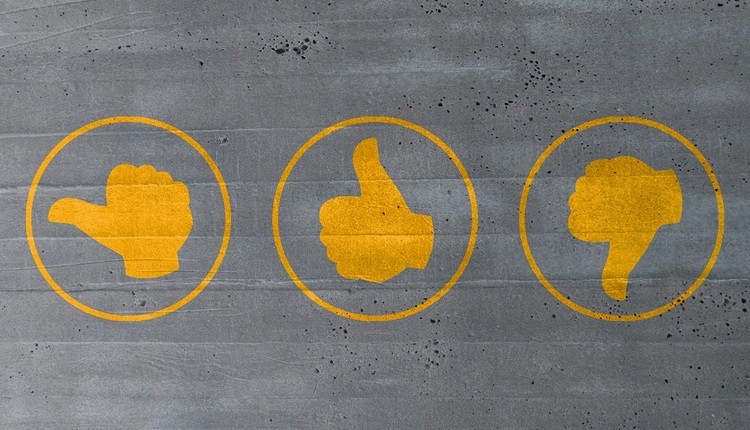A new customer service representative (CSR) raised an interesting issue. Her department was responsible for the shipping of replacement parts for the company�s industrial equipment. The problem was that the critical spare part shipments did not always arrive at the customer�s facility safe and intact. Because many of the company�s customers operate on just-in-time schedules, a broken part means costly downtime. It was not pleasant talking to a customer when a replacement part was received damaged. The CSR finally urged the shipping department to take another look at its packaging procedures.
The above story is typical. Someone notices a problem with the way a manufacturing plant or distribution center is packaging products. Perhaps damage claims are being filed, customers are complaining or the controller is flagging rising costs. When companies start probing, they often find their existing protective packaging methods are inadequate and were selected without rigorous analysis. The packaging specifications may have been recommended by the corrugated supplier based on the familiarity of the former purchasing manager, or they simply followed what others in the industry were using. And often changes and new developments � in packaging technology or the current product mix � have not been taken into account.
An Array of Options
Companies face a variety of options in evaluating their inside-the-box packaging needs. Most people are familiar with bubble wrap and peanuts. But many other options including kraft paper, air pillows or foam should be considered to optimize the packaging solution. Additionally, decision-makers need to look at the benefits of implementing a single product versus an integrated systems approach.
Distribution managers need to be aware of the advantages and limitations of the various inside-the-box packaging materials. For example, loose fill is inexpensive and only effective in void-fill applications. Loose fill tends to allow the product to migrate to the bottom of the container during shipment, leaving it susceptible to damage. In the case of the industrial equipment manufacturer mentioned above, heavy parts sometimes shifted around inside the box, puncturing the carton and allowing smaller items to fall out.
Air pillows are another void-fill alternative, but their use is limited. Air pillows are subject to temperature and altitude fluctuations, which can cause deflation or bursting, leaving the shipment virtually unprotected. Surprising to some people, paper cushioning tends to be the most versatile material. Paper pads can be used for all four types of protective packaging � blocking and bracing, cushioning, void fill or wrapping.
New Considerations
The packaging selection process has also become more complex. Today, companies must add environmental concerns to the equation, along with cost, performance and customer acceptance. Distribution managers are also adjusting to the changing requirements brought about by the increasing volume of goods shipped as individual parcels rather than as unit loads.
Developments in packaging equipment technology have brought some new approaches to the packaging function in recent years. Much of the innovation is driven by the demands of high-volume users. Some warehouses today can process thousands of packages per hour. Managers want packaging systems that are more automated and can handle such high throughput.
One such automated process is a system that brings information technology to the packaging line, linking a company�s packing stations with a networked computer database. Detailed packaging specifications are displayed to packing-line personnel on a computer screen on a real-time, as-needed basis. The system enables users to standardize packing procedures, control inventory, train and pace operators and track labor and materials as each box is packed for shipment.
Packaging Guidelines
To select the optimum packaging solution for a particular situation, take a look at the product, shipping method, box, cost as well as operating environment. A few guidelines developed over the many years of package testing and consulting are presented here.
The first step is to consider what you are shipping. Are your products fragile or sturdy? Light or heavy? Bulky or compact? High- cost or inexpensive? Or all of the above? As noted earlier, some packaging materials are more versatile than others.
The next step is to evaluate the distribution environment your shipments move through, from your facility to the end user. You want to understand the kinds of hazards that can be encountered and the time involved. In addition to shock and vibration, one must evaluate compression, extreme temperatures, altitude, moisture and the potential for theft. An individual parcel encounters many more touches than the same package moving as part of a unit load. Distribution center volume is also a critical consideration. High-volume, high-speed environments will generally benefit from customized solutions.
One question we always ask before we evaluate a package for a customer or prospect is whether they are willing to change the existing corrugated box. We often find that by changing its packaging method, a company can reduce carton size by as much as 25% without compromising protection.
Changing a box must be offset against adding more box sizes and the corresponding inventory and storage issues. As part of the research, check with your customers, carriers and shipping and customer service people to determine how well your current packaging methods are performing. This kind of basic research often turns up problems that had not previously surfaced. A lot of minor damages are never claimed, and a good deal of feedback never gets to the right department. In the package testing we conduct for customers, it is not unusual for us to observe some damage to products that have been shipped to us. When we point this out to the company, they are often surprised.
If you are going to the trouble of evaluating your protective packaging, you should consider formal testing based on ASTM and ISTA procedures. Testing gives you quantified data that provides the basis for making good decisions and helps avoid disputes later. My company does testing at no charge for customers and qualified prospective customers. Some other suppliers and carriers may do the same.
Analyzing Costs
One of the most common errors in comparing different types of protective packaging is the failure to estimate the costs accurately. For example, EPS loose fill will generally compress to a considerable extent inside the box. In computing your true cost, you need to measure the actual volumes as the product is being used � not just an estimate based on the cube of the carton. EPS peanuts generally compress 15% to 20%.
Similarly, one pound of foam-in-place chemical will yield less than one pound of foam. And don�t forget the other costs associated with foam-in-place such as the equipment, plastic film, solvent, drum disposal and maintenance costs. There are also safety-related costs. Hazardous ingredients in foam systems require employers to take specific steps to protect workers from exposure.
Indirect costs are easy to overlook when doing a cost comparison between different types of protective packaging. Have you considered the cost of the daily cleanup in your facility and on the receiving end that is almost always inevitable with loose fill or foam? How about material handling costs? You may also have an investment in material handling and storage equipment that could be reduced or avoided by using a different type of packaging material for your products.
Space utilization is an important issue that is often overlooked. The warehouse may not have room for large quantities of cartons and packaging material. Bulky rolls of bubble pack, for example, can take up 30 times as much space as dense rolls of kraft paper. By finding a more versatile packaging system, you may be able to reduce your supply of cartons and packaging materials substantially.
Packaging is a dynamic part of the overall distribution function that offers many companies significant potential cost savings and productivity improvements. Even when alarms are not ringing, distribution managers should regularly review their inside-the-box protective packaging methods to be sure that there isn�t a better way to do it.
Dale Hopp is the package engineering manager at Ranpak Corporation. Ranpak is a manufacturer of technology-based packaging systems and products for inside-the-box applications. For more information, please visit the Web site www.ranpak.com or call 800-726-7257.










